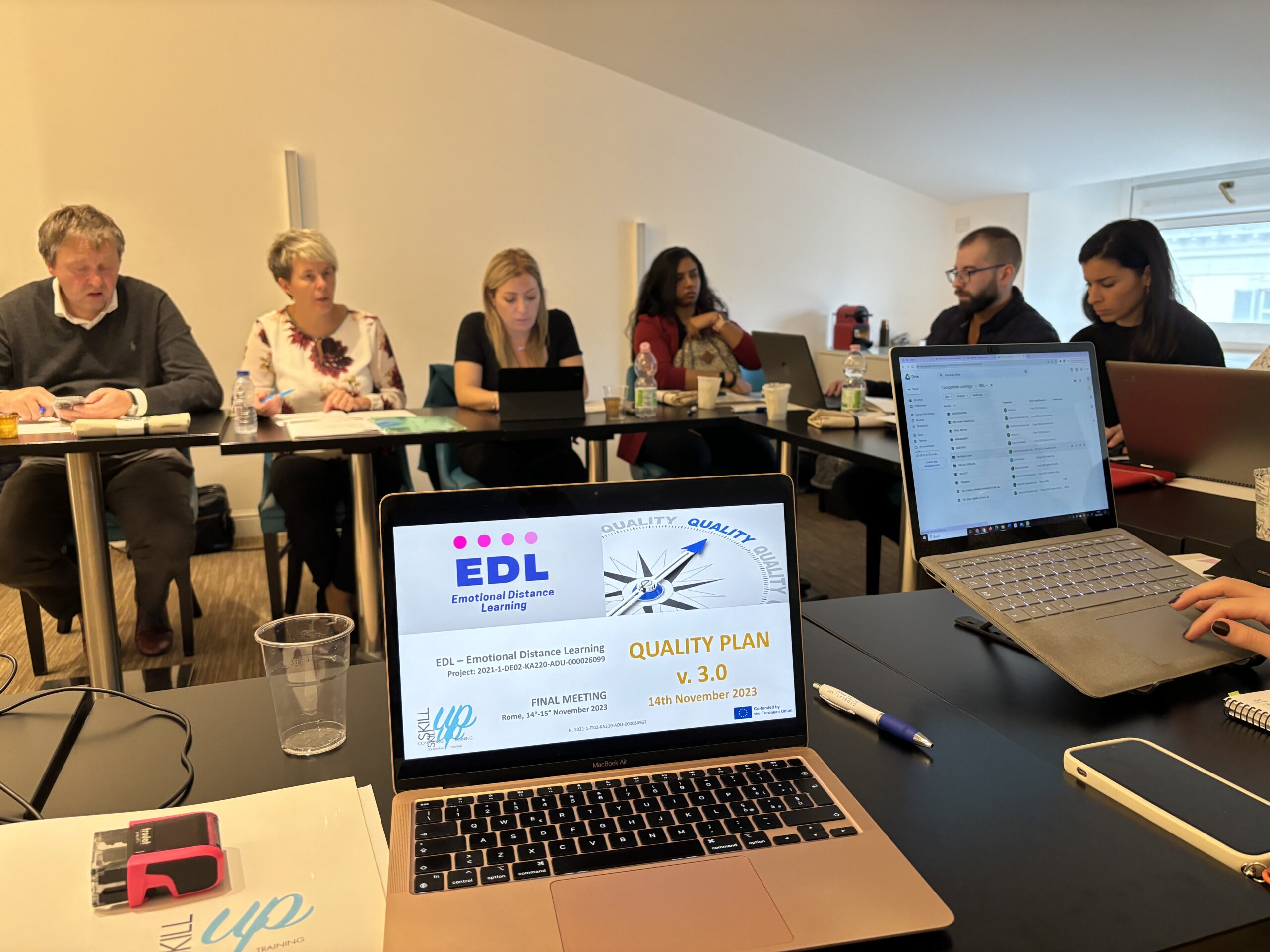By Angie Rey, Babel Idiomas
How many of us have run into obstacles in a learning environment? And in a distance learning environment? Better yet, who hasn’t?
I suppose that, if we were in a room together, we would all be looking around at this point searching for that one lucky person who raises their hand. Yet, to no surprise, that lucky person who hasn’t run into obstacles would be nowhere to be found.
Why? Why do we all run into obstacles, and at times so many of them, in a learning environment, especially if it is at a distance? Along with the why, how, how do we overcome them?
This is exactly what our project, #EDLearning, aims to help teachers and trainers do, understand inter- and intrapersonal, social, and emotional factors that can affect the distance learning environment, and learn ways to better manage them.
We at #Babel were fortunate enough to attend the first Transnational Project Meeting (TPM1) alongside our partners #Eurospeak from Ireland, #SkillUp from Italy, #HSW from Germany, and #Akadimos from Greece, held in mid-October, in Cordoba, Spain by our partner, #INDEPCIE.
In order to move forward with a project, there must be a solid foundation on which to build. It’s easy to ignore minor incongruities, assume that there will be no effect on the greater scheme of things, and move on for times’ sake, but it’s paying attention to those small discrepancies that creates a stronger base for the rest of the project to take form from. This was our focus during the first half of our TPM1 on 17th October.
We reviewed the results of the first part of the project, which was a new self-assessment tool that we created in order to help teachers and trainers know their level of socio-emotional skills in distance learning, debated, changed, added, and discussed until we were all content with the quality of it. This is what it is all about, commitment and dedication to create the most effective project possible.
The first step in being able to improve in anything is knowing where to start, by using this self-assessment tool, teachers and trainers will become aware of which areas they need to learn to better manage in order to create a socio-emotional friendly learning environment, which will then guide them in the next step of the project.
In the second half of our TPM1 meeting on 17th October, we focused on moving forward with the second part of the project, which is a training system for teachers and trainers in emotional distance learning consisting of modules catered to different aspects of inter- and intrapersonal emotion management.
We wanted to really put ourselves in the shoes of professionals for whom this project is aimed for, so all partners actively took part in a workshop in order to verify our understanding of the similarities and differences between inter- and intrapersonal emotions, the fine line between the teacher’s or trainer’s emotional self-management and the management of the emotions of their learners. We ourselves, what we create in this project, must be an example for professionals to follow, so this workshop led us to decide on a format for the modules to best assist teachers and trainers who take part in the training.
Other topics covered in this TPM1 were project dissemination, management, and quality. We concluded this meeting with a clear vision of the necessary steps to complete in the next 8 months of the project, something that we are sure will be of great value thanks to the solid foundation we have worked so hard on to create together.





0 Comments